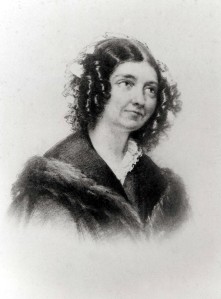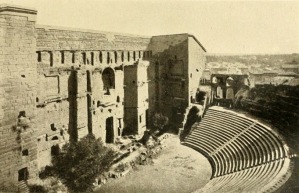 Achille de Daunant was Guizot’s oldest friend, and one of the most faithful. Guizot established and developed an exceptionally good and intense relationship with Daunant’s younger sister Laure, born in 1790. The correspondence published in 1934, covering a period from 1830 to 1863, shows its extent even though only some four hundred of his letters, which was not the totality, remain. Laure’s letters were burnt by Guizot at her request, a fairly common occurence but that always suggests the wish to erase the expression of an unpublishable intimacy.
Achille de Daunant was Guizot’s oldest friend, and one of the most faithful. Guizot established and developed an exceptionally good and intense relationship with Daunant’s younger sister Laure, born in 1790. The correspondence published in 1934, covering a period from 1830 to 1863, shows its extent even though only some four hundred of his letters, which was not the totality, remain. Laure’s letters were burnt by Guizot at her request, a fairly common occurence but that always suggests the wish to erase the expression of an unpublishable intimacy.
Guizot had known her as a little girl in Nîmes, and met her again in 1813 when married to Auguste de Gasparin, originating from a Protestant family of minor nobility in the Vaucluse, he himself also born in 1787, a farmer and landowner who would become Mayer of Orange in 1836 and Deputy for the Drôme from 1837 to 1842, with Guizot’s help. Under the July monarchy, François Guizot and Laure de Gasparin, who was living in Orange or in her residence at Lacointe in the Gard, saw one another quite frequently in Paris, where she ran the household of her Deputy husband and also of Adrien de Gasparin, her husband’s elder brother, Minister of the Interior from 1835 to 1837 and again in 1839, the widower of her elder sister Rosalie de Daunant since 1834.
At what moment did the tender feelings, perhaps insufficiently illustrated in Guizot’s letters, take form? In any event, they reached their highest point between his second widowhood in 1833 and the appearance of the Princess von Lieven in 1837, at a time when he had not attachments.He wrote to her in May, 1836: “So many things I am not writing to you but that I shall tell you, dearest friend! Some too small, others too intimate to put in writing.” And again, one month later, revealing himself in a way he rarely did; “there is deep in our heart such an ardent desire for total abandonment, such intense pleasure in the absence of all reticence, all constraint, in the certainty of a reciprocal freedom and ease that with the woman you love, whom you love totally, who loves you totally, one sometimes indulges with enchanting enthusiasm in a freedom of thought, of word, of imagination and expression that, in any other relationship, would be unbearable and impossible.” One can imagine that she replied in the same vein. They had never been closer to one another, but we shall never know to exactly what extent. No doubt the proximity of Guizot with the Daunant-Gasparin families prohibited the liaison from being developed to its ultimate limits.
It remains that the intimacy of heart and mind that joined them together was only surpassed by Guizot’s relationships with his two wives. With this intelligent, witty and lively woman, a strong personality, he could express himself totally in very varied domains: family life, health, friendships, books, politics, feelings, religion, current events and anecdotes. Never was he more at ease than in her presence.
 It would seem that she did not hesitate to tell him exactly what she was thinking with a vigour that did not displease him, their mutual esteem and confidence overcoming any bad temper or divergence of opinion. And they very often laughed together. Laure de Gasparin, childless and a widow since 1857, died on February 4, 1864 in Orange. Thanks to her, the richest aspects of Guizot’s personality were revealed and it is certain that she provided him with a form of intense and peaceful happiness.
It would seem that she did not hesitate to tell him exactly what she was thinking with a vigour that did not displease him, their mutual esteem and confidence overcoming any bad temper or divergence of opinion. And they very often laughed together. Laure de Gasparin, childless and a widow since 1857, died on February 4, 1864 in Orange. Thanks to her, the richest aspects of Guizot’s personality were revealed and it is certain that she provided him with a form of intense and peaceful happiness.